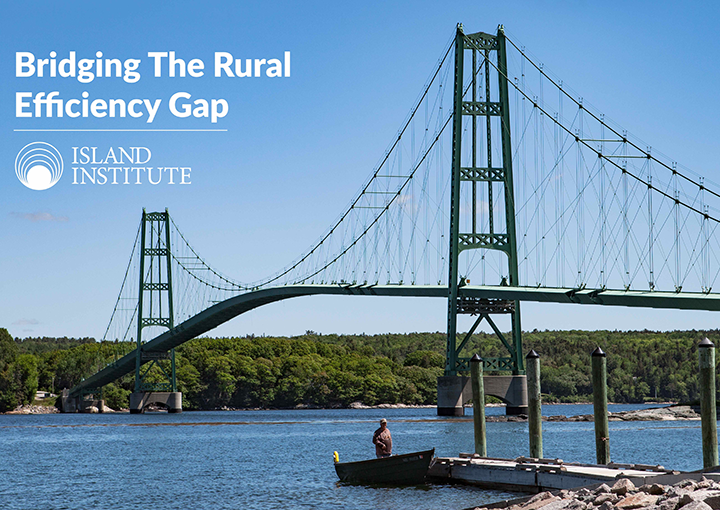
Bridging the Rural Efficiency Gap
Expanding access to energy efficiency upgrades in remote and high energy cost communitiesIslands and rural communities throughout the United States pay some of the highest costs for electricity and heating fuel in the nation. With such high energy costs, the benefits of energy efficiency can be significant, but rural residents face several geographic, financial, and awareness barriers that make it difficult to invest in home energy upgrades. These barriers combine to create a market failure that we call the “rural energy efficiency gap.”
The Island Institute, in partnership with the Maine Governor’s Energy Office and a team of experts from other rural states, is working to bridge this gap. The Bridging the Rural Efficiency Gap project is designed to make it easier for residents of rural communities in oil-dependent states like Maine, Alaska, New Hampshire, and Vermont to increase the energy efficiency of their homes and lower their energy bills with the support of well-designed financing programs that work in rural places.
This report is designed to be a resource for energy efficiency program administrators but may also be of interest to energy efficiency program implementers, policymakers, and regulators. It provides data about the rural energy efficiency gap and identifies barriers to energy efficiency in rural communities. It also highlights strategies that are helping to bridge the gap by making it easier for residents in cold climate, petroleum-dependent states—those with high thermal energy burdens—to increase comfort and safety in their homes while also reducing energy bills.
Read the full white paper here.
For more information on the Bridging the Rural Efficiency Gap project, visit: www.islandinstitute.org/bridging-rural-efficiency-gap